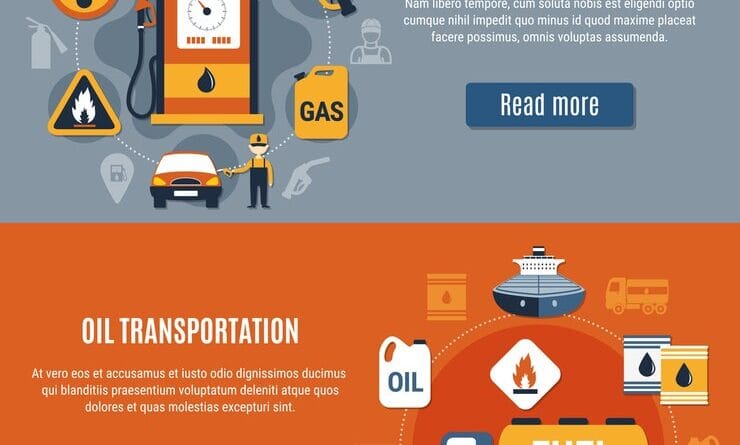What to Know Before Starting a Fuel Delivery App Development
As fuel delivery becomes more popular, businesses see a significant opportunity to create fuel delivery apps to meet consumer demand for convenience and efficiency. However, launching a successful fuel delivery app requires careful planning, an understanding of industry regulations, and awareness of potential challenges. You need to know this before starting a fuel delivery app development project.
Table of Contents
Understanding the Fuel Delivery Market
Before diving into app development, it’s crucial to understand the current landscape of the fuel delivery industry. This market has seen growth due to increasing consumer demand for convenience and the need for businesses to streamline operations. Here are a few aspects to consider:
- Growth Trends: The fuel delivery industry is expanding, with the adoption of on-demand services for individuals and businesses. Industries such as logistics, construction, and fleet management often require scheduled fuel deliveries, making them significant segments to target.
- Market Potential: Fuel delivery services offer a high potential for growth in urban areas and industries dependent on regular fuel supply. This potential creates an opportunity for businesses willing to innovate in a relatively new market.
Key Features to Include in a Fuel Delivery App
Developing a fuel delivery app requires more than a simple ordering interface. To create a seamless user experience and ensure the app’s success, certain features are essential.
- User Profile and Registration
Allow users to register, create profiles, and manage their accounts. Include options for both individual and corporate accounts to serve a wider range of customers. - Order and Delivery Scheduling
Users should be able to order fuel on-demand or schedule future deliveries. Flexible scheduling is key for industries with fluctuating fuel needs, such as logistics and transportation. - Real-time GPS Tracking
Real-time tracking allows users to view the location of delivery vehicles, ensuring transparency and offering convenience by keeping customers informed of delivery status. - Payment Integration
Offer multiple secure payment options, such as credit cards, digital wallets, or bank transfers. Integrate payment gateways that comply with security standards to ensure safe transactions. - Push Notifications and Alerts
Notifications keep customers updated on order confirmation, estimated delivery times, and special promotions. Push notifications are essential for customer engagement and satisfaction. - Safety Protocols and Guidelines
Since fuel is a hazardous material, the app should clearly outline safety protocols. This section can include handling guidelines, emergency contacts, and reminders for safe fuel usage. - Ratings and Feedback
Feedback mechanisms allow customers to rate their delivery experience and provide insights to improve service quality. This feature helps build credibility and customer trust.
Technology Stack for Fuel Delivery App Development
Choosing the right technology stack is essential for building a robust and scalable fuel delivery app. Your app’s technology will determine its performance, security, and user experience.
- Frontend Technologies
Use popular frontend frameworks like React Native or Flutter for cross-platform compatibility. This approach allows your app to run smoothly on both iOS and Android devices, reducing development time and cost. - Backend Technologies
A reliable backend is essential for processing orders, managing user data, and handling real-time tracking. Consider using Node.js or Django for backend development due to their scalability and performance. - Database
A secure database is essential for storing sensitive user and transaction data. Use databases like PostgreSQL, MySQL, or MongoDB, which are known for reliability and data security. - Third-party APIs
For functionalities like GPS tracking, payment processing, and SMS notifications, use third-party APIs. For example, Google Maps API enables accurate location tracking, while Stripe or PayPal offer secure payment gateways.
Compliance with Legal and Regulatory Standards
Fuel delivery is a regulated industry, and your app must comply with local, national, and international regulations. Here’s what you need to consider:
- Obtaining Required Permits and Licenses
Fuel delivery often requires permits related to hazardous materials. Check with local authorities to ensure you meet all legal requirements for storing and transporting fuel. - Compliance with Environmental Standards
Due to the environmental impact of fuel delivery, ensure your app and operations align with environmental safety regulations. Regular audits and adherence to industry standards can help avoid penalties and improve your brand’s reputation. - Data Privacy and Security Compliance
User data is sensitive, so ensure compliance with data protection laws, such as GDPR (General Data Protection Regulation) if your app targets users in Europe. Secure handling of data is essential for building trust and preventing breaches.
Challenges in Fuel Delivery App Development
Developing a fuel delivery app presents some unique challenges, from logistical complexities to safety concerns. Here are common challenges you should prepare for:
- Logistics and Inventory Management
Efficient logistics are critical to ensure timely deliveries. Implement real-time tracking and inventory management solutions to avoid stock shortages or delayed deliveries, which can negatively impact customer satisfaction. - Ensuring Driver and Fuel Safety
Fuel is hazardous, so ensuring the safety of drivers and consumers is a priority. Equip vehicles with safety measures and provide driver training to handle emergencies, such as leaks or fires. - Handling Seasonal and Demand Fluctuations
Fuel demand may vary based on seasons or events. Develop a flexible inventory management system and plan for peak periods, such as during festivals or fuel shortages, to handle sudden surges in demand. - Scaling the Platform
As your app gains popularity, scaling to accommodate more users is vital. Choose a scalable architecture and cloud solutions to handle increased traffic without performance drops.
Steps to Develop a Fuel Delivery App
Developing a fuel delivery app involves multiple stages, each requiring a strategic approach and collaboration with skilled developers. Here’s a roadmap to guide you through the process:
- Research and Conceptualization
Conduct market research to understand user needs and competitor offerings. Define your app’s unique selling points and target audience before moving forward. - Design and Wireframing
Collaborate with designers to create a user-friendly interface. Use wireframes to outline app features, layout, and user journeys for easy navigation. - Backend and Frontend Development
Develop the backend to support order processing, user authentication, and tracking features. Simultaneously, build the frontend to provide an intuitive user experience. - Testing and Quality Assurance
Conduct extensive testing to identify bugs and performance issues. Perform security checks to ensure user data is protected, and test across various devices for compatibility. - Deployment and Launch
Deploy the app on app stores and promote it to reach your target audience. Ensure ongoing support for resolving any post-launch issues and consider implementing user feedback.
Conclusion: Creating a Successful Fuel Delivery App
Developing a fuel delivery app offers exciting opportunities, especially as the demand for on-demand services grows. However, it’s crucial to understand the technical, regulatory, and logistical requirements unique to this industry. You can create a reliable and competitive delivery app by focusing on essential features, adhering to safety protocols, and preparing for common challenges. Partnering with experienced developers can further streamline the process, ensuring a successful launch and long-term growth.
FAQs
1. How much does it cost to develop a fuel delivery app?
The cost of developing a delivery app can vary significantly based on app complexity, features, and developer rates. On average, expect to spend between $30,000 and $80,000, depending on your specific needs.
2. Is a fuel delivery app safe to use?
Yes, with proper safety protocols and compliance with regulatory standards, fuel delivery apps can be safe. It’s essential to train drivers and incorporate emergency response measures for added safety.
3. What permits are needed to start a fuel delivery service?
You’ll need permits for fuel storage and transportation, along with certifications for handling hazardous materials. Local regulatory bodies can provide the exact requirements based on your location.
4. How long does it take to develop a fuel delivery app?
The development timeline can vary, but a standard fuel delivery app can take around 4-6 months from concept to launch. Custom features and extensive testing may extend this timeframe.
5. Can I add more services to my fuel delivery app in the future?
Yes, a scalable app architecture allows for future updates and added services, such as vehicle maintenance or car wash services, expanding the app’s functionality and reach.



